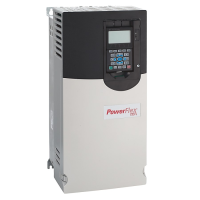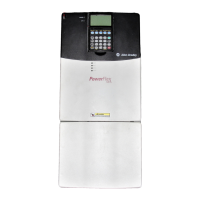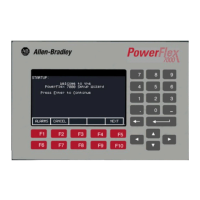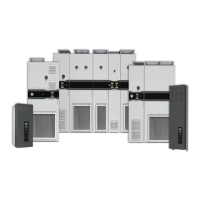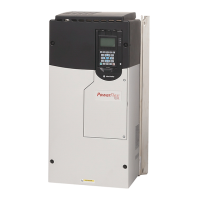Faults 2-93
Faults Faults are events or conditions occurring within and/or outside of the drive.
Theses events or conditions are (by default) considered to be of such
significant magnitude that drive operation should or must be discontinued.
Faults are annunciated to the user via the HIM, communications and/or
contact outputs. The condition that caused the fault determines the user
response.
Once a fault occurs, the fault condition is latched, requiring the user or
application to perform a fault reset action to clear the latched condition. If
the condition that caused fault still exists when the fault is reset, the drive
will fault again and the fault will be latched again.
When a Fault Occurs
1. The drive is set as faulted, causing the drive output to be immediately
disabled and a “coast to stop” sequence to occur
2. The fault code is entered into the first buffer of the fault queue (see
“Fault Queue” below for rules).
3. Additional data on the status of the drive at the time that the fault
occurred is recorded. Note that there is only a single copy of this
information which is always related to the most recent fault queue entry
[Fault 1 Code], parameter 243. When another fault occurs, this data is
overwritten with the new fault data. The following data/conditions are
captured and latched into non-volatile drive memory:
– [Status 1 @ Fault] - drive condition at the time of the fault.
– [Status 2 @ Fault] - drive condition at the time of the fault.
– [Alarm 1 @ Fault], - alarm condition at the time of the fault.
– [Alarm 2 @ Fault] - alarm conditions at the time of the fault.
– Fault Motor Amps - motor amps at time of fault.
– [Fault Bus Volts] - unfiltered DC Bus volts at time of fault..
– [Fault Frequency] (Standard Control).
– [Fault Speed] (Vector Control) - drive output frequency (or speed) at
time of fault.
Fault Queue
Faults are also logged into a fault queue such that a history of the most
recent fault events is retained. Each recorded event includes a fault code
(with associated text) and a fault “time of occurrence.” The PowerFlex 70
drive has a four event queue and the PowerFlex 700 has an eight event
queue.
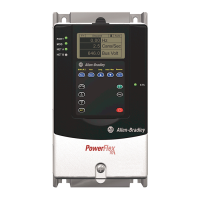
